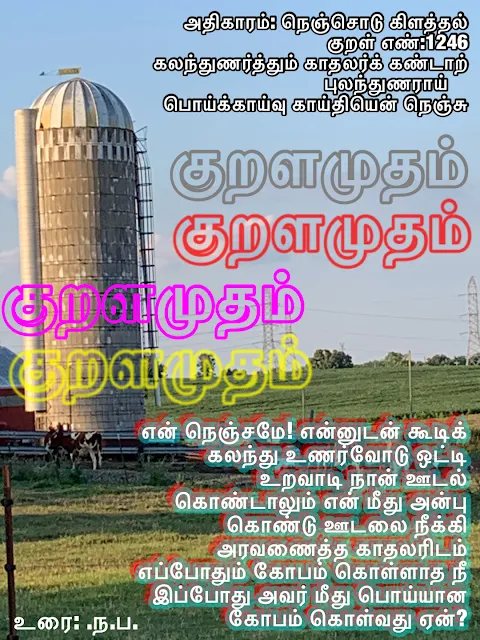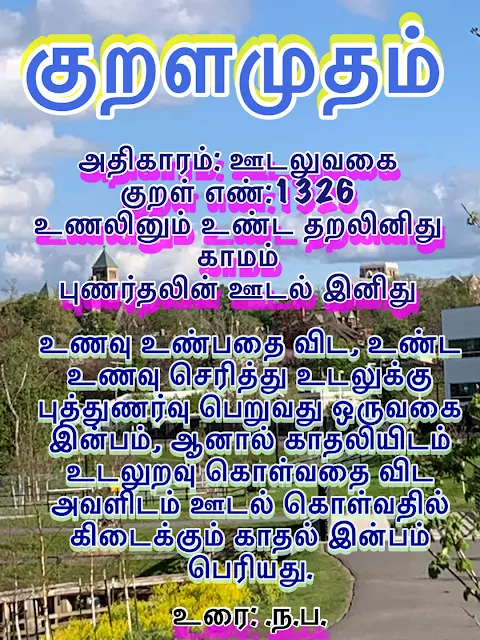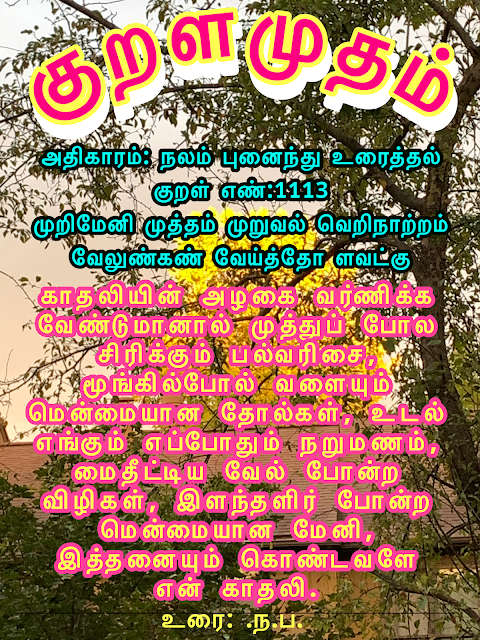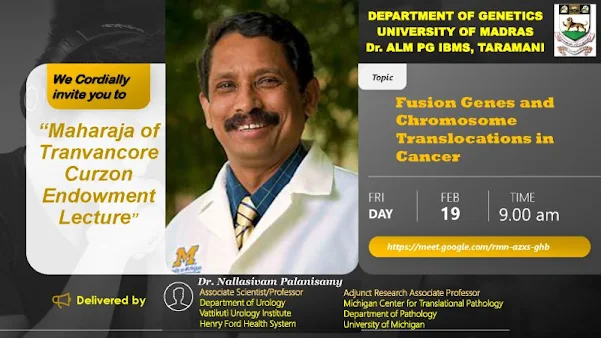
The Path I Traversed: From Kammankattukalam to Kalam "I never imagined that the hands that once held the plow would one day shake hands with Dr. Kalam. During those days, though life was rooted in toil, I never let go of hope or self-confidence. It was this unwavering belief that turned even unimagined dreams into reality. From humble beginnings to extraordinary moments, my journey stands as a testament to resilience and the power of dreams fueled by determination and self-trust."
Search This Blog
Thursday, April 8, 2021
Saturday, March 27, 2021
Saturday, February 20, 2021
Endowment Lecture
ENDOWMENT LECTURE
The Indian Universities commission was appointed in 1902 by Curzon to make recommendations for reforms in University Education in India. The recommendations of the India Universities Commission were enacted by Curzon as Indian Universities Act 1904
Monday, February 8, 2021
Publication in Clinical Cancer Research
Clin Cancer Res
Virus-positive Merkel cell carcinoma is an independent prognostic group with distinct predictive biomarkers
- 1Dermatology, University of Michigan–Ann Arbor.
- 2Department of Biostatistics, University of Michigan School of Medicine.
- 3Strata Oncology.
- 4Pathology, Michigan Center for Translational Pathology, University of Michigan–Ann Arbor.
- 5Urology, Henry Ford Health System.
- 6Diagnostics, Strata Oncology.
- 7Pathology, University of Michigan–Ann Arbor.
- 8Pathology, University of Michigan Medical School.
- 9Department of Pathology, University of Michigan–Ann Arbor.
- 10Internal Medicine and Hematology/Oncology, University of Michigan–Ann Arbor.
- 11Otolaryngology-Head and Neck Surgery, University of Michigan–Ann Arbor.
- 12Surgery, University of Michigan–Ann Arbor.
- 13University of Michigan–Ann Arbor.
- 14Department of Pathology, Department of Urology, Michigan Center for Translational Pathology, Comprehensive Cancer Center, University of Michigan–Ann Arbor.
- 15Pathology, Dermatology, Michigan Center for Translational Pathology, University of Michigan–Ann Arbor paulharm@med.umich.edu.
- PMID: 33547200
- DOI: 10.1158/1078-0432.CCR-20-0864
Abstract
Purpose: Merkel cell carcinoma (MCC) is an aggressive cutaneous neuroendocrine carcinoma that can be divided into two classes: virus-positive (VP) MCC, associated with oncogenic Merkel cell polyomavirus (MCPyV); and virus-negative (VN) MCC, associated with photodamage.
Experimental design: We classified 346 MCC tumors from 300 patients for MCPyV using a combination of immunohistochemistry, in situ hybridization, and quantitative PCR assays. In a subset of tumors, we profiled mutation status and expression of cancer-relevant genes. MCPyV and molecular profiling results were correlated with disease-specific outcomes. Potential prognostic biomarkers were further validated by immunohistochemistry.
Results: 177 tumors were classified as VP-MCC, 151 tumors were VN-MCC, and 17 tumors were indeterminate. MCPyV positivity in primary tumors was associated with longer disease-specific and recurrence-free survival in univariate analysis, and in multivariate analysis incorporating age, sex, immune status, and stage at presentation. Prioritized oncogene or tumor suppressor mutations were frequent in VN-MCC but rare in VP-MCC. TP53 mutation developed with recurrence in one VP-MCC case. Importantly, for the first time we find that VP-MCC and VN-MCC display distinct sets of prognostic molecular biomarkers. For VP-MCC, shorter survival was associated with decreased expression of immune markers including granzyme and IDO1. For VN-MCC, shorter survival correlated with high expression of several genes including UBE2C Conclusions: MCPyV status is an independent prognostic factor for MCC. Features of the tumor genome, transcriptome, and microenvironment may modify prognosis in a manner specific to viral status. MCPyV status has clinicopathologic significance and allows for identification of additional prognostic subgroups.
Copyright ©2021, American Association for Cancer Research.
Thursday, February 4, 2021
Elucidating tumor heterogeneity in prostate cancer by combined immunohistochemistry and RNA in situ hybridization
Friday, December 18, 2020
Publication in Journal of Clinical Endocrinology and Metabolism
J Clin Endocrinol Metab. 2020 Nov 24;dgaa855. doi: 10.1210/clinem/dgaa855. Online ahead of print.
A noncoding variant near PPP1R3B promotes liver glycogen storage and MetS, but protects against myocardial infarction
Bratati Kahali, Yue Chen, Mary F Feitosa, Lawrence F Bielak, Jeffrey R O'Connell, Solomon K Musani 6, Yash Hegde, Yanhua Chen, L C Stetson 1, Xiuqing Guo, Yi-Ping Fu, Albert Vernon Smith, Kathleen A Ryan, Gudny Eiriksdottir, Ariella T Cohain, Matthew Allison, Andrew Bakshi, Donald W Bowden, Matthew J Budoff, J Jeffrey Carr, Shannon Carskadon, Yii-Der I Chen, Adolfo Correa, Breland F Crudup, Xiaomeng Du, Tamara B Harris, Jian Yang, Sharon L R Kardia 4, Lenore J Launer, Jiankang Liu, Thomas H Mosley, Jill M Norris, James G Terry, Nallasivam Palanisamy, Eric E Schadt, Christopher J O'Donnell, Laura M Yerges-Armstrong, Jerome I Rotter, Lynne E Wagenknecht, Samuel K Handelman, Vilmundur Gudnason, Michael A Province, Patricia A Peyser, Brian Halligan, Nicholette D Palmer, Elizabeth K Speliotes.
PMID: 33231259 DOI: 10.1210/clinem/dgaa855
Abstract
Context: Glycogen storage diseases are rare. Increased glycogen in the liver results in increased attenuation.
Objective: Investigate the association and function of a noncoding region associated with liver attenuation but not histologic nonalcoholic fatty liver disease.
Design: Genetics of Obesity-associated Liver Disease Consortium.
Setting: Population-based Main Outcome: Computed tomography measured liver attenuation.
Results: Carriers of rs4841132-A (frequency 2-19%) do not show increased hepatic steatosis; they have increased liver attenuation indicative of increased glycogen deposition. rs4841132 falls in a noncoding RNA LOC157273 ~190kb upstream of PPP1R3B. We demonstrate that rs4841132-A increases PPP1R3B through a cis genetic effect. Using CRISPR/Cas9 we engineered a 105bp deletion including rs4841132-A in human hepatocarcinoma cells which increases PPP1R3B, decreases LOC157273 and increases glycogen perfectly mirroring the human disease. Overexpression of PPP1R3B or knockdown of LOC157273 increased glycogen but did not result in decreased LOC157273 or increased PPP1R3B, respectively, suggesting that the effects may not all occur via affecting RNA levels. Based on EHR data, rs4841132-A associates with all components of the metabolic syndrome (MetS). However, rs4841132-A associated with decreased low-density lipoprotein (LDL) cholesterol and risk for myocardial infarction (MI). A metabolic signature for rs4841132-A includes increased glycine, lactate, triglycerides and decreased acetoacetate and beta-hydroxybutyrate.
Conclusions: These results show that rs4841132-A promotes a hepatic glycogen storage disease by increasing PPP1R3B and decreasing LOC157273. rs4841132-A promotes glycogen accumulation and development of MetS but lowers LDL cholesterol and risk for MI. These results suggest that elevated hepatic glycogen is one cause of MetS that does not invariably promote MI.
Keywords: GWAS; NALFD; genetics; glycogen; metabolic syndrome; triglyceride.
© The Author(s) 2020. Published by Oxford University Press on behalf of the Endocrine Society. All rights reserved. For permissions, please e-mail: journals.permissions@oup.com.




































































































































































































































